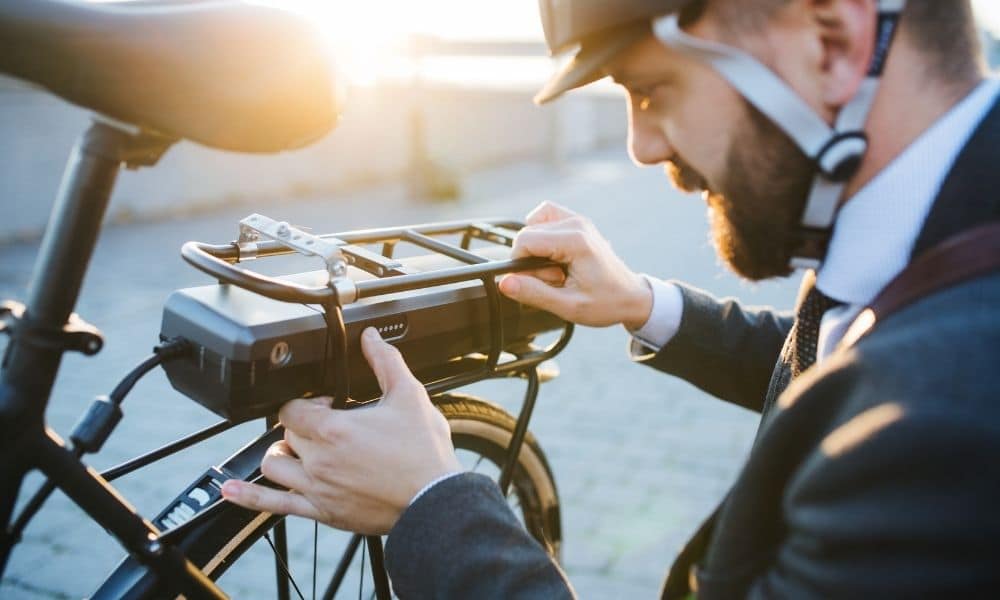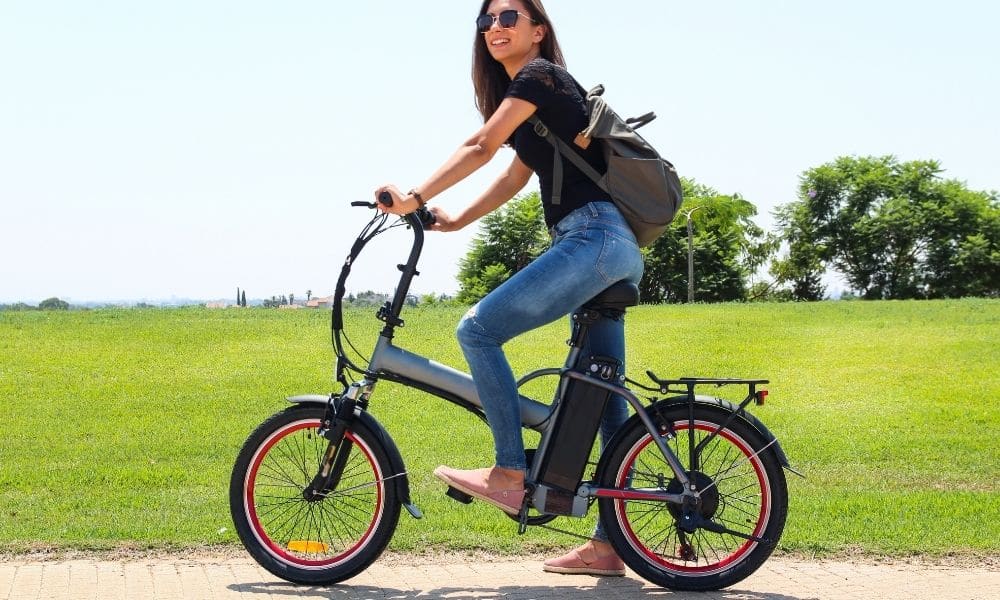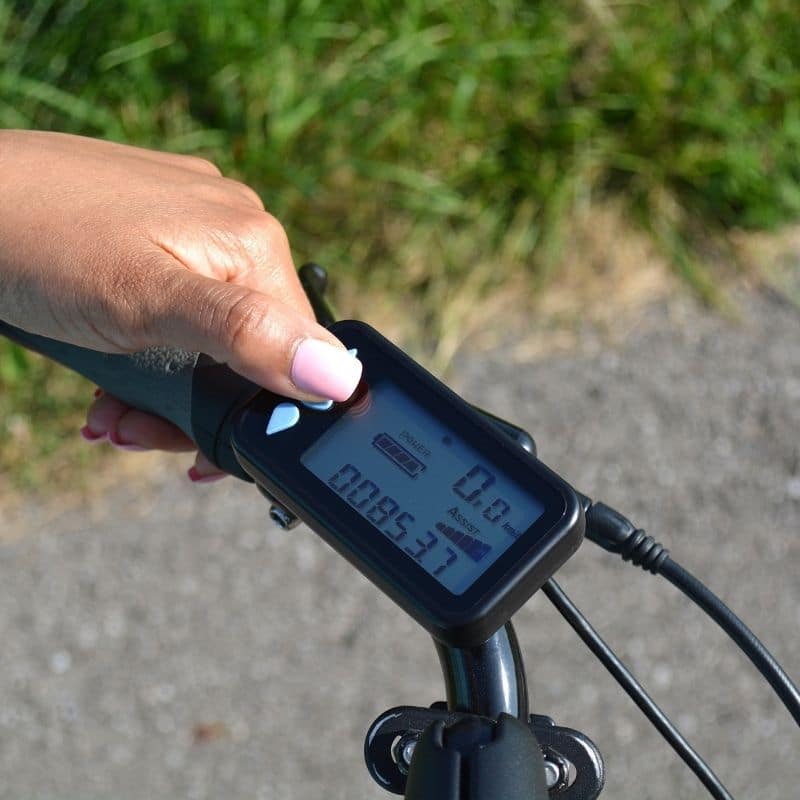Ebike sales are going through the roof. It appears that more and more ebikes are being used each day, on the road, off the road, in the park, and along the shore. Yet there are many people, it seems, who still do not understand what an ebike is? How an ebike works? And what makes an ebike different from a traditional bike?
The Simple Answer to What Is an Ebike?
An ebike is a bicycle that has added to it, an electric motor, and a battery to power that motor, and a control that decides how much assistance the battery will give the motor.
Well, that really is a simple answer. What if I want more information?
Let’s look at the components individually then. Let’s glean a little bit of knowledge of the most important components, without needing a science degree.
What Is an Ebike Motor?
Every ebike has an electric motor that propels the ebike forward. The motor is usually either integrated into the front or rear wheel hub, or positioned centrally (mid-drive) next to the pedals. There are other configurations which I won’t go into, but 99% of ebikes have an electric motor either in a wheel hub or adjacent to the pedals.
Manufacturers have reasons why they may position the ebike motor where they do, which may come down to manufacturing cost more than ride quality. Mid-drive motor ebikes tend to be more expensive, but a mid-drive powered ebike tends to be better balanced and gives the rider a more natural feel as they pedal along.
Ebike motors come in a range of powers measured in Watts (W). The more Watts a motor produces, the more power it has. Different countries in the world have different legislation as to what the maximum wattage an ebike motor should have. For more information on ebike legislation check here.
There are also kits available to turn an existing traditional bicycle into an ebike, if you have DIY abilities, or pay someone who has. Ebike motor kits also come in a range of powers, so it is advisable to know what the laws are in your region before you buy a kit. You do not want to spend money on converting a bicycle to an ebike, then have it confiscated by the authorities because what you have built is illegal where you reside.
The ebike motor is the part that powers the ebike forward, and eases you along with hardly a sweat when pedalling. The ebike motor, it would say, ‘is the most important component,’ but what powers the motor to power the ebike?
What Is an Ebike Battery?
No matter how well built and powerful the ebike motor is, the ebike is going nowhere without a charged battery. The battery, if it could talk to the motor, would state, ‘that it, the battery, is the most important component, because, without it, the motor is useless deadweight.’ Which is true. Just as a steam locomotive with a full load of coal will go nowhere without fire to burn the coal and heat the boiler to steam the engine. An ebike motor will go nowhere without a battery to charge the circuits, to turn the motor, to push the ebike forward.
Batteries are probably the most confusing component of an ebike for the layman or the electrically inept of us (myself included), to comprehend. Here we have a complicated arena full of Amps (A), Amp hours (Ah), Watts (W), and Watt hours (Wh), and also in here somewhere is voltage (V).

Relax, though, I am not going to explain all that in a simplistic form that even I may understand. It is enough to know what range a fully charged battery on the ebike will give you when you use the motor at full assist, and know that you will go farther if you decrease the assist setting. You can though learn a bit more about batteries here, if you desire.
Manufacturers ratings for range tend not to be accurate in true to life use. For example, on a cold day a battery will take you less of a distance than on a warm day. And, as batteries age, they tend to start to lose some capacity, so again, take you less of a distance than a brand-new battery would.
This is not a major drawback. When you get to know your ebike, you will soon know through experience, how far your ebike will take you on a full charge, and tailor your charging regime to ensure you always have enough power to get you where you want to go.
The motor, and the battery, therefore, are the most important components of an ebike.
What Is an Ebike Controller?
Between the battery and the motor sits a complicated piece of circuitry called the controller. The controller has a fair bit to do and can be quite a brainy gadget for its size. It is not only connected to the battery and the motor, it has a connection from the assist setting switch on the handlebar, the brakes, and the hand-throttle (if the ebike has one), and also to a cadence, or torque sensor, where they may be located on the ebike. It has a bearing on the overall performance of the ebike depending on what is asked of it. For example, if it detects that the pedals are not being rotated, and the brake is applied, it will cut the power to the motor. If it detects pedalling by the rider, it will turn on the power. If it detects that a higher assist level has been requested, it will allow more power from the battery to work the motor harder.
The controller, being the brains of the whole operation, constantly adjusting settings, and responding instantly to changes made by the rider, either through hand controls or pedalling, would say to both the motor, and the battery, that, ‘it was the most important component of the ebike.’
And who can argue with that? The fact is, that for a smallish component, the controller is quite the whiz-kid.
Other Ebike Components Worth a Mention
There are other components that make up an ebike and are more or less essential to the smooth running of the ebike as the manufacturer intended. A cadence sensor detects pedal movement and lets the controller know to apply power. Or else a torque sensor, which actually interprets the force the rider is using to pedal the ebike, and informs the controller to vary the amount of assist to take up the strain and ease the effort of the rider.
Some ebikes have a throttle, which can power the ebike without pedalling at all. Ebikes with a throttle can be legal or illegal depending on your location, so check the laws where you live if you are interested in an ebike with a throttle.

The Most Important Component of an Ebike, in Reality!
The only component that counts, is the rider, when using the analogy, when operating the ebike, the rider is part of the machine. And, in reality, when you are out and about on your ebike, it is you, the rider, that is controlling everything, and the actual controller is only doing your bidding to align battery output and motor power to whatever you require. When you do this, you are in tune with your ebike and this is when you can enjoy it most.
Therefore, there is no need at all, really, to get into complicated understanding of each component. If they all work, and they all work well together, then you have a great ebike that you can go out and enjoy.

